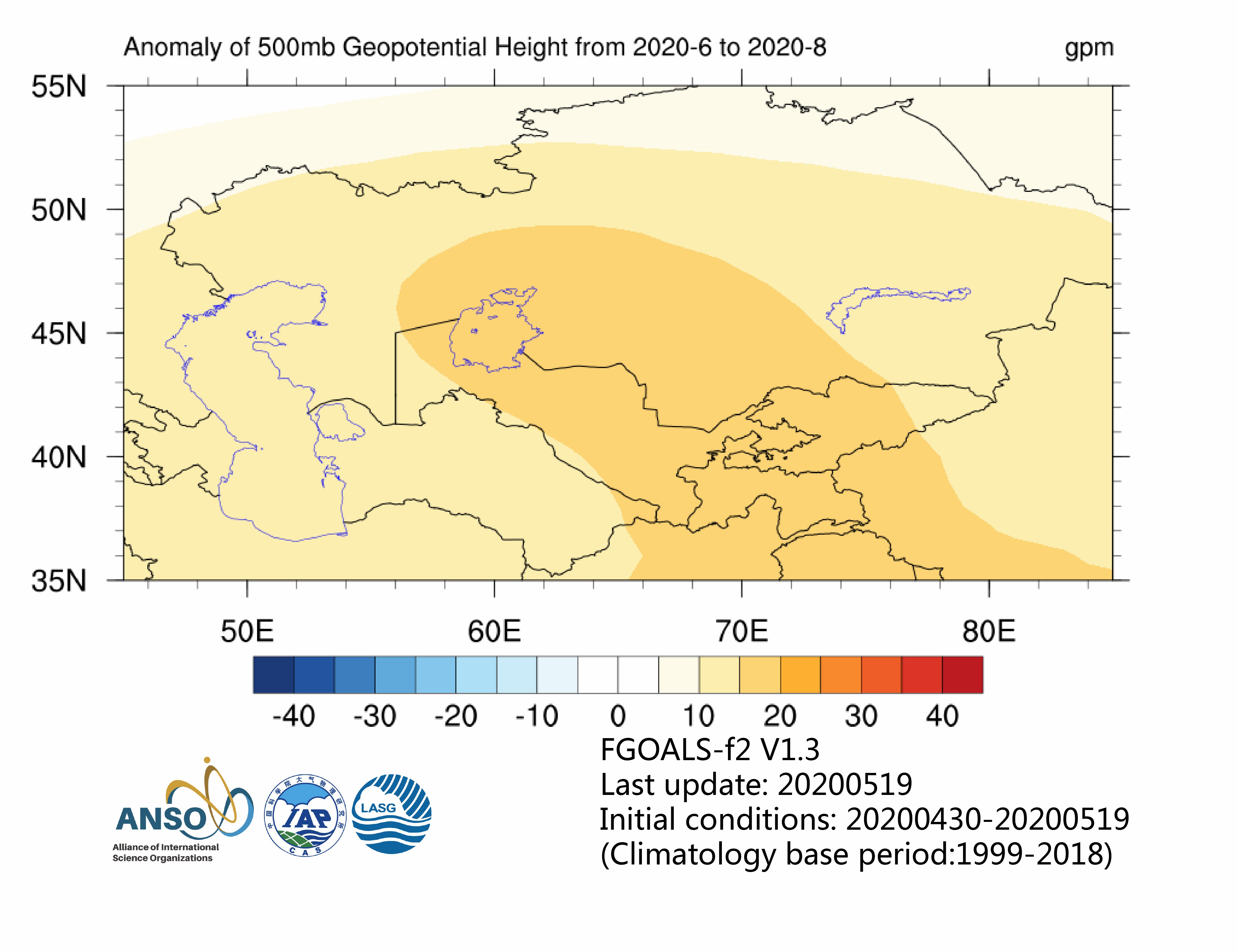MISSPAD Introduction
Countries along the Belt and Road (B&R), due to their unique geographic locations, climatic environments, and poor economic conditions, are susceptible to meteorological and climatic disasters such as typhoons, torrential rains, droughts, sandstorms, heatwaves, and cold waves. Therefore, strengthening the capacity building of meteorological forecasting and disaster prevention services in these countries is the key to responding to natural disasters and achieving UN Sustainable Development Goals (SDGs).
The project, the Multi-model-Integrated Subseasonal-to-Seasonal Prediction and Application in Disaster Risk Reduction (short for MISPAD), was launched by Alliance of International Science Organizations (ANSO) in January 2020. This three-year project will share and apply the sub-seasonal-seasonal (S2S) weather and climate forecasts in the B&R regions. With partners in Kyrgyzstan, Thailand, Sri Lanka, and Nepal, this project will help to improve the ability of climate disaster prevention in related countries, safeguard food security, ecological environment, and socio-economic development. This demonstration project will strengthen cooperation for the "B&R" countries, improve meteorological disaster warning systems, improve necessary capabilities, and explore new pathways for sustainable development.
The latest seasonal forecast was released by the ANSO MISSPAD project on May 19, 2020. It predicts higher temperature, more severe hot weather and heatwaves in Central Asia this summer. The southern part of Central Asia will experience unusually more rainfall, possibly leading to more severe floods and geological disasters.
Figure 1. The summer (JJA) precipitation anomaly percentage (%) predicted by ANSO MISSPAD for the summer of 2020.
1. More rainfall is predicted in Central Asia, which may help to relieve drought, while tend to cause severe floods and landslides in this region
The ANSO MISSPAD project is mainly based on the FGOALS-f2 subseasonal-to-seasonal prediction system of the Institute of Atmospheric Physics, Chinese Academy of Sciences (IAP/CAS). According to the latest seasonal forecast, the central Asian region will have more precipitation in the summer of 2020 (June, July and August), with more precipitation in the central and eastern regions of Uzbekistan and Turkmenistan, western Kyrgyzstan and western Tajikistan, and southern Kazakhstan (Figure 1). The precipitation anomaly percentage is above 90%. More precipitation is predicted to occur mainly in July and August.
Although the precipitation will alleviate the drought stress in Central Asia, the mountainous area in eastern Central Asia is characterized by complex terrain and great height variation. Attention should be paid to prevent geological disasters such as floods and landslides, especially the Amu Darya River and the Syr Darya River basins.
The more rainfall in Central Asia is related to the intensification of high-pressure ridges of the circulation field. There is a strong positive anomaly center in the 500hPa geopotential height (Figure 2). The low-level easterly anomaly on the west side of the Pamir Plateau tends to cause airflow convergence of the westerly belt, which leads to an increase in precipitation.
Figure 2. The summer (JJA) 500hPa geopotential height anomaly (units: gpm) predicted by the FGOALS-f2 Subseasonal-to-Seasonal Prediction System of ANSO MISSPAD for the summer of 2020.
2. A hotter summer is predicted in Central Asia, with frequent and stronger heatwaves.
According to the FGOALS-f2 subseasonal-to-seasonal prediction system, the temperature anomaly in most of Central Asia is about 0.5 ℃ higher than the climatology in summer (Figure 3). In Kyrgyzstan and Tajikistan, the average temperature will be 0.7-1.0 ℃ higher. In June, the higher temperature will be mainly in the northern and eastern of Central Asia, with the positive temperature anomaly center in central Kazakhstan, central Kyrgyzstan and central Tajikistan. In July, higher temperature will be in the southeastern region of Central Asia, mainly in Tajikistan, the eastern part of Kyrgyzstan, Uzbekistan and Turkmenistan. The high temperature anomaly center will be in the northern region of Central Asia in August.
The higher-temperature anomaly is related to the high-pressure ridge of the circulation in Central Asia. The positive anomaly center of 500hPa geopotential height in the lower atmosphere tend to cause subsidence and temperature increasing, which will exacerbate the pressure on water resources and electricity in Central Asia.
Figure 3. The summer (JJA) temperature anomaly (℃) predicted by the FGOALS-f2 Subseasonal-to-Seasonal Prediction System of ANSO MISSPAD for the summer of 2020.
Platform Introduction
The FGOALS-f2 weather-climate dynamic ensemble forecast display platform is an important service platform for MISSPAD. It is jointly funded by ANSO and the National Natural Science Foundation of China major research project of the earth-atmosphere coupling system on the Qinghai-Tibet Plateau and its global climate effect.
The core architecture of FGOALS-f2 weather and S2S prediction system is the climate system model CAS FGOALS-f2 of CAS/IAP/LASG. There are 4 fully coupled components of CAS FGOALS-f2, including atmospheric, oceanic, land, and sea ice modules. CAS FGOALS-f2 has two standard horizontal resolutions: 100 km and 25 km. The dynamic core of atmospheric component (FAMIL2) is FV3, and the key process of the physical processes in FAMIL2 is a resolved convection precipitation scheme (RCP).
The realtime prediction system covers the timescale from weather to season, and the prediction products cover both the global and regional areas (e.g. ENSO, Arctic Sea Ice, Tibet Plateau and B&R countries and regions). It provides forecasting services for disaster prevention and mitigation of climate change in countries and regions along the B&R.



